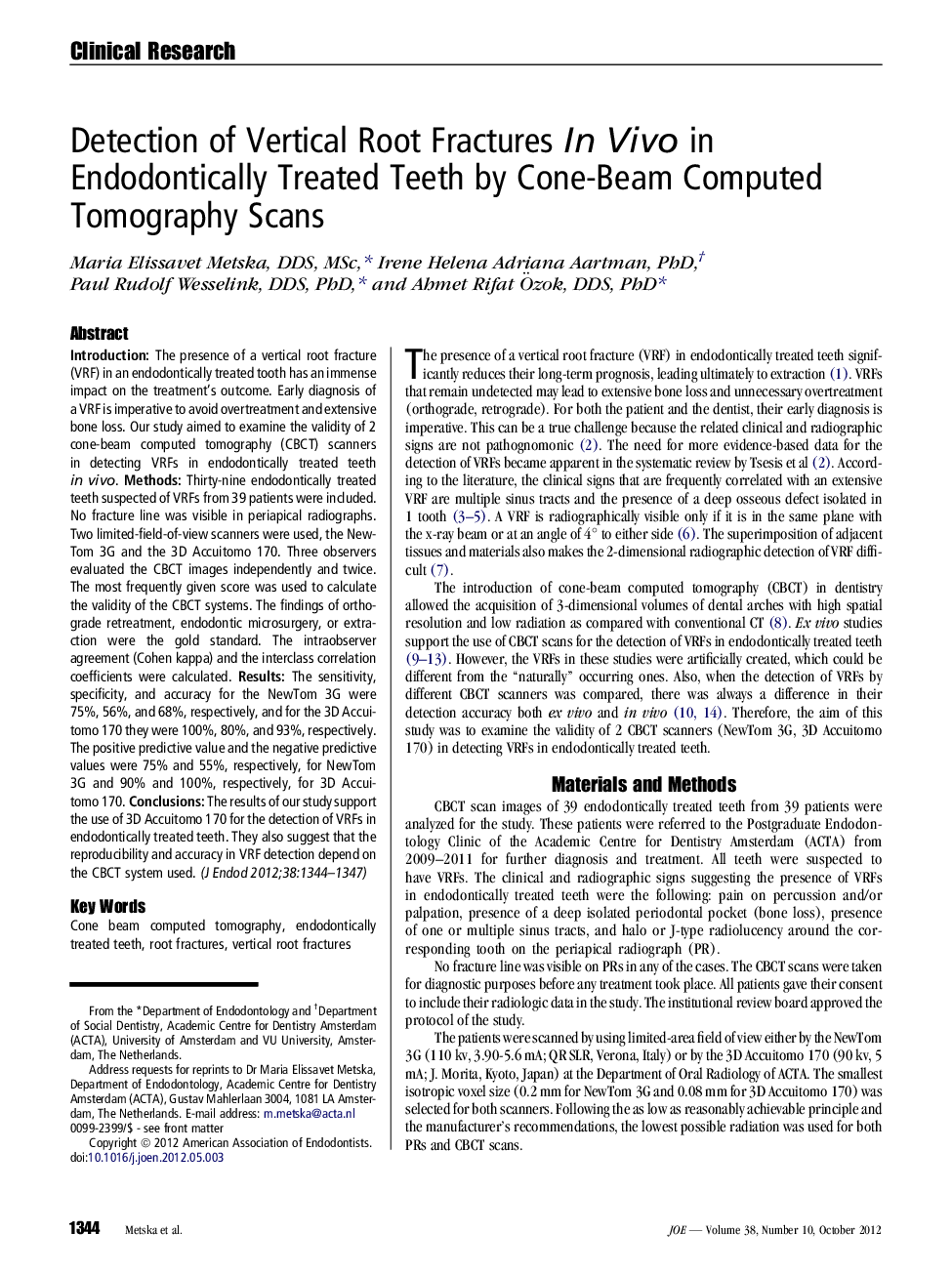| Article ID | Journal | Published Year | Pages | File Type |
|---|---|---|---|---|
| 3148828 | Journal of Endodontics | 2012 | 4 Pages |
IntroductionThe presence of a vertical root fracture (VRF) in an endodontically treated tooth has an immense impact on the treatment’s outcome. Early diagnosis of a VRF is imperative to avoid overtreatment and extensive bone loss. Our study aimed to examine the validity of 2 cone-beam computed tomography (CBCT) scanners in detecting VRFs in endodontically treated teeth in vivo.MethodsThirty-nine endodontically treated teeth suspected of VRFs from 39 patients were included. No fracture line was visible in periapical radiographs. Two limited-field-of-view scanners were used, the NewTom 3G and the 3D Accuitomo 170. Three observers evaluated the CBCT images independently and twice. The most frequently given score was used to calculate the validity of the CBCT systems. The findings of orthograde retreatment, endodontic microsurgery, or extraction were the gold standard. The intraobserver agreement (Cohen kappa) and the interclass correlation coefficients were calculated.ResultsThe sensitivity, specificity, and accuracy for the NewTom 3G were 75%, 56%, and 68%, respectively, and for the 3D Accuitomo 170 they were 100%, 80%, and 93%, respectively. The positive predictive value and the negative predictive values were 75% and 55%, respectively, for NewTom 3G and 90% and 100%, respectively, for 3D Accuitomo 170.ConclusionsThe results of our study support the use of 3D Accuitomo 170 for the detection of VRFs in endodontically treated teeth. They also suggest that the reproducibility and accuracy in VRF detection depend on the CBCT system used.
